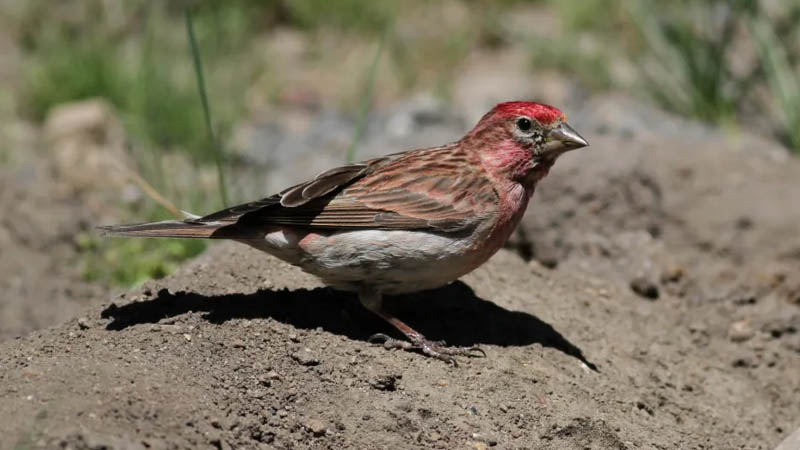Cassin’s Finch
Haemorhous cassinii (Baird 1854)

Appearance
Size: L 6.25″
Shape: Fairly small, moderately slim birds with relatively short notched tail and a fairly short conical bill with a straight culmen, making it look very pointed. Bushy crest often raised.
Both Sexes: Thin, pale eye-ring.
Adult Male: Pale rosy wash over head, breast, and rump, brightest and darkest
on crown; fairly contrasting dark-brownish streaking on pinkish-brown back; underparts white with variable fine dark streaking on flanks and undertail coverts.
Adult Female: Streaked brown overall; indistinct whitish eyebrow and moustachial region on brown face; fine blackish streaking on white underparts; undertail coverts finely streaked. Compare with female Purple Finch.
1st Year: Both sexes like adult f., but some 1st-yr. m. may have pinkish or
yellowish tinge.
Natural History
Found throughout the conifer belts of North America’s western interior mountains.
Taxonomy
Monotypic
Object of study
Mimicry and irruptive behaviors.
Preferred Foods
Mostly vegetable matter, particularly buds, berries and other fruits and seeds. Feeds heavily on tree buds, including staminate buds of quaking aspen and vegetative buds of various conifers. Feeds on seeds of ponderosa pine as well. Sometimes feeds on sunflower seeds at feeding stations.
Flight Call
Liquid tidilip; Tidilip call relatively longer and more complex than keeup, consisting of very quick series of tones on different frequencies; very distinctive and confusable with the flight call of other finches.
Irruptions
Is an altitudinal migrant sometimes irrupting in numbers down slope into the mountain valleys. Also winter core range appears to shift from year to year.



